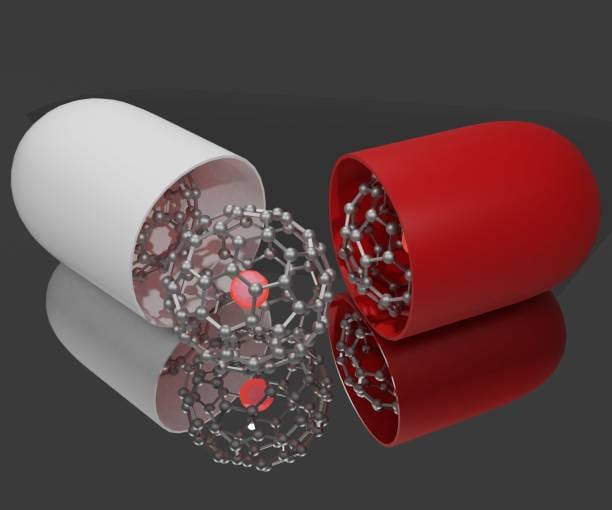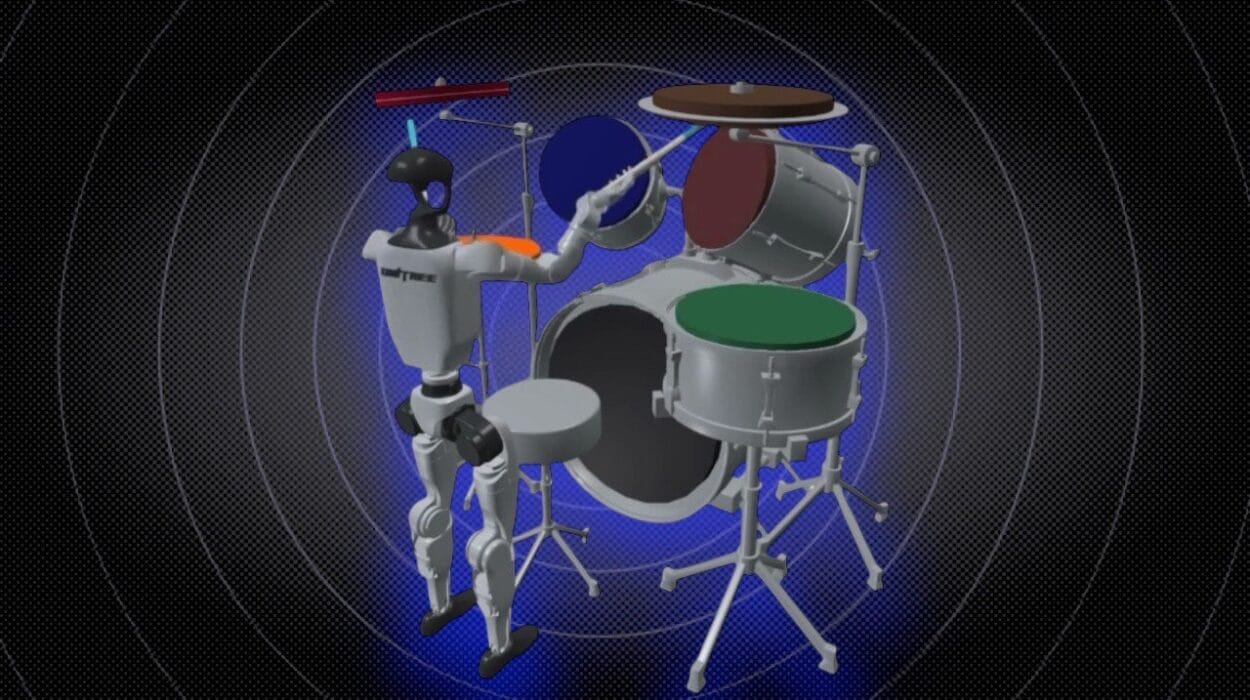There are moments in human history when science takes a leap so profound that it forever changes the way we understand and treat disease. The discovery of antibiotics. The advent of vaccines. The unraveling of DNA’s double helix. Today, we stand on the brink of another such transformation—one that is happening not in the vast spaces of operating rooms or laboratories but at a scale so small it defies imagination. Nanomedicine, the fusion of nanotechnology and medicine, is quietly rewriting the rules of healthcare across the globe.
At its heart, nanomedicine operates at the nanoscale—one-billionth of a meter. To grasp this, consider that a human hair is about 80,000 nanometers wide. Within this microscopic realm, scientists are building tools and therapies capable of navigating the body with surgical precision, targeting diseases at their molecular roots, and delivering cures once thought impossible.
What makes this revolution so breathtaking is not just the technology itself but its promise: treatments that are more personalized, less invasive, and dramatically more effective than anything medicine has offered before. The world of nanomedicine is where science fiction meets reality—a realm where minuscule machines and engineered particles patrol our bloodstreams, detecting and destroying disease at its source.
The Birth of Nanomedicine
While the term “nanomedicine” might sound futuristic, its roots stretch back decades. The concept of manipulating matter at the nanoscale was famously envisioned by physicist Richard Feynman in 1959 during his lecture “There’s Plenty of Room at the Bottom.” Feynman imagined a future where humans could engineer materials and devices atom by atom.
This vision gained traction in the 1980s with the development of tools like the scanning tunneling microscope, which allowed scientists to visualize and manipulate individual atoms. Soon after, researchers began applying these ideas to medicine, recognizing that many diseases start at the molecular or cellular level—a scale perfectly matched to nanotechnology.
By the early 2000s, nanomedicine emerged as a distinct scientific field. Its mission: to create nanoscale devices and systems that could diagnose, monitor, and treat disease with unprecedented accuracy. The dream of tiny machines working within the human body was no longer just speculation—it was becoming a reality.
Understanding the Nanoscale: Where Science Shrinks
Nanomedicine works because of the unique properties that materials exhibit at the nanoscale. At this level, quantum effects and surface phenomena dominate, allowing nanoparticles to behave differently from their larger counterparts.
Gold, for example, appears shiny and inert at a visible scale. But in nanoparticle form, gold can absorb light and convert it into heat—a property now exploited to destroy cancer cells with targeted thermal therapy. Similarly, nanoparticles can penetrate cell membranes, interact with DNA, or bind selectively to proteins—abilities that bulk materials simply do not possess.
This microscopic magic opens doors that traditional medicine cannot. Instead of flooding the entire body with high doses of drugs, nanomedicine can deliver therapeutics directly to diseased cells, minimizing side effects. It can ferry genetic material into cells to repair faulty genes or even act as tiny sensors, continuously monitoring health from within.
Nanoparticles as Medical Couriers
One of nanomedicine’s earliest and most impactful breakthroughs lies in drug delivery. Traditional treatments, like chemotherapy, often act like sledgehammers—destroying healthy and diseased cells alike. Nanoparticles, by contrast, are precision instruments.
Engineered nanoparticles can be coated with molecules that recognize and bind to specific cell types, such as cancer cells. Once attached, they release their therapeutic payload only where needed. This approach reduces toxicity, enhances drug effectiveness, and spares patients the debilitating side effects of systemic treatments.
Liposomes, tiny spherical vesicles, were among the first nanomedicine carriers to reach clinical use. Today, more sophisticated nanoparticles—made of polymers, metals, or even biological materials—are delivering treatments for cancer, infectious diseases, and inflammatory conditions worldwide. These microscopic couriers are transforming the way we think about medicine: from blunt-force interventions to intelligent, targeted therapies.
Fighting Cancer with Nanotechnology
Perhaps nowhere is nanomedicine’s impact more visible than in the battle against cancer. Cancer is a disease of complexity—mutated cells hiding within normal tissue, evading the immune system, and resisting conventional therapies. Nanotechnology offers new hope by attacking cancer from multiple angles simultaneously.
Nanoparticles can deliver chemotherapy drugs directly to tumors, bypassing healthy tissues. Some are designed to slip past the blood-brain barrier, allowing treatment of brain cancers that were previously untouchable. Others use magnetic fields or light to activate drugs only when they reach their target, further minimizing collateral damage.
Experimental nanobots—microscopic robotic systems made from DNA strands—have been programmed to seek out and destroy tumor blood vessels, starving cancers from within. In laboratories, researchers have demonstrated nanoparticles that can sense cancerous cells and change color, acting as early diagnostic tools visible through imaging.
The promise of nanomedicine is not just to treat cancer but to outthink it—to anticipate its defenses and adapt in real time. As these breakthroughs move from research labs into clinical trials, the future of oncology is being reshaped at the nanoscale.
Nanotechnology and Infectious Disease
The global COVID-19 pandemic demonstrated how rapidly infectious diseases can overwhelm healthcare systems. It also showcased nanomedicine’s power to respond. The mRNA vaccines developed by Pfizer-BioNTech and Moderna relied on lipid nanoparticles to deliver genetic instructions safely into cells, teaching the immune system to recognize and fight the virus.
This success was not an isolated case. Nanotechnology is now a cornerstone in vaccine design, antiviral therapies, and diagnostics. Nanoparticle-based platforms enable rapid development of vaccines for emerging pathogens, while nanosensors can detect infections at extremely low concentrations, even before symptoms appear.
In parts of the world where healthcare resources are limited, these portable, low-cost nanodiagnostics are transforming public health, enabling earlier intervention and better control of outbreaks. The fight against diseases like malaria, tuberculosis, and HIV is gaining powerful new allies in the form of nanomedicine innovations.
Regenerating the Body from Within
Nanomedicine is not just about fighting disease—it is also about rebuilding what has been lost. Tissue engineering and regenerative medicine have embraced nanotechnology to create scaffolds and materials that mimic the body’s natural environment.
These nanoscale scaffolds guide the growth of new cells, helping repair damaged organs, regenerate bone and cartilage, and even heal spinal cord injuries. Researchers are developing nanofibers that release growth factors in controlled bursts, encouraging stem cells to rebuild tissues precisely where needed.
One visionary application is in artificial organs. Nanomaterials are being used to create biocompatible surfaces that resist clotting and infection, making implants safer and longer-lasting. Looking ahead, fully functional organs grown with the aid of nanotechnology could one day replace transplants, ending the chronic shortage of donor organs worldwide.
The Power of Nano-Imaging and Diagnostics
Accurate diagnosis is the foundation of effective treatment, and nanomedicine is revolutionizing how we see and measure disease. Nanoparticles can be engineered to seek out specific biomarkers of illness, glowing under imaging technologies like MRI or CT scans.
These contrast agents allow doctors to detect cancers, cardiovascular disease, and neurological disorders far earlier than conventional methods. Some nanosensors can measure single molecules in blood samples, identifying diseases in their earliest, most treatable stages.
Nanotechnology is also enabling point-of-care diagnostics—tiny devices that analyze blood, saliva, or breath on the spot, delivering instant results. This is particularly transformative in developing countries, where access to centralized laboratories is limited. Early detection saves lives, and nanomedicine is making it faster, cheaper, and more accurate than ever before.
Nanorobots: The Future of Surgery and Therapy
Perhaps the most awe-inspiring vision of nanomedicine is the concept of nanorobots—machines so small they can travel through blood vessels, performing surgeries and therapies from the inside. Though still largely experimental, significant progress is being made.
In recent studies, researchers have designed magnetic nanorobots capable of navigating through bodily fluids, delivering drugs to hard-to-reach areas. Others have demonstrated DNA-based nanomachines that can open and close like a box, releasing medicine only when encountering a diseased cell.
Future nanorobots could repair cellular damage, unclog arteries, or even destroy pathogens one by one. Imagine receiving an injection of millions of microscopic healers programmed to patrol your body, constantly repairing and maintaining your health. This is not science fiction—it is a vision scientists are actively pursuing.
Global Impact and Accessibility
Nanomedicine’s influence is not confined to advanced research hospitals in wealthy nations. Around the world, this technology is improving access to care in underserved regions. Portable nanodiagnostic kits are enabling rural clinics to test for diseases without expensive lab infrastructure. Nanoparticle-based treatments are being designed to remain stable without refrigeration, crucial for deployment in tropical climates.
Organizations are partnering globally to ensure that these breakthroughs reach all corners of the planet. From combating malaria in sub-Saharan Africa to providing rapid tuberculosis screening in South Asia, nanomedicine is bridging healthcare gaps that have persisted for decades.
Ethical and Safety Considerations
With great power comes great responsibility, and nanomedicine is no exception. Working at the nanoscale raises important ethical and safety questions. How do nanoparticles behave long-term inside the body? Could they accumulate and cause harm? How should we regulate invisible machines that can alter human biology?
Scientists are addressing these concerns through rigorous testing and transparent regulatory frameworks. Advances in biodegradable nanomaterials are reducing potential risks, ensuring that medical nanoparticles break down safely after their work is done. Global discussions are underway to establish guidelines for responsible development and deployment of nanomedicine.
As with all transformative technologies, public trust will be essential. Open communication between scientists, policymakers, and communities will determine how smoothly nanomedicine integrates into mainstream healthcare.
The Road Ahead: A Vision of Nano-Enabled Healthcare
Looking to the future, it is clear that nanomedicine will not just complement traditional medicine—it will redefine it. Picture a world where diseases are detected before symptoms arise, where targeted therapies cure conditions without side effects, where failing organs are regenerated rather than replaced, and where microscopic robots continuously maintain human health.
This vision is ambitious, but the pace of progress is breathtaking. Clinical trials for nanoparticle-based treatments are expanding rapidly. Research in nanorobotics, gene delivery, and smart diagnostics is accelerating. Artificial intelligence is joining forces with nanotechnology, designing nanoparticles with precision beyond human capability.
As these technologies mature, healthcare will shift from reactive to proactive, from generalized to personalized. Medicine will move inside the body, treating illness at the level of molecules and genes. The global impact will be profound—extending lifespans, reducing healthcare costs, and improving quality of life for billions.
Humanity’s Next Leap
Nanomedicine is not just a scientific breakthrough; it is a philosophical one. It challenges our notions of scale, control, and healing. It shows that even the tiniest tools can wield unimaginable power when guided by human ingenuity and compassion.
Just as the microscope opened our eyes to bacteria and transformed medicine centuries ago, nanotechnology is revealing a new dimension of life—one where disease can be understood, prevented, and cured from within. It is a story still being written, but one with the potential to alter the course of human health forever.
In every nanoparticle navigating a bloodstream, in every nanosensor detecting illness before it strikes, we glimpse a future where medicine is no longer limited by what the human hand can touch or the human eye can see. It is a future built at the smallest scale, yet capable of delivering the greatest healing humanity has ever known.





